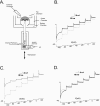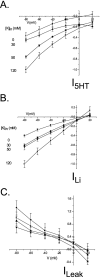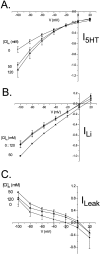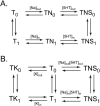Ionic currents in the human serotonin transporter reveal inconsistencies in the alternating access hypothesis
- PMID: 12944272
- PMCID: PMC1303331
- DOI: 10.1016/S0006-3495(03)74587-1
Ionic currents in the human serotonin transporter reveal inconsistencies in the alternating access hypothesis
Abstract
We have investigated the conduction states of human serotonin transporter (hSERT) using the voltage clamp, cut-open frog oocyte method under different internal and external ionic conditions. Our data indicate discrepancies in the alternating access model of cotransport, which cannot consistently explain substrate transport and electrophysiological data. We are able simultaneously to isolate distinct external and internal binding sites for substrate, which exert different effects upon currents conducted by hSERT, in contradiction to the alternating access model. External binding sites of coupled Na ions are likewise simultaneously accessible from the internal and external face. Although Na and Cl are putatively cotransported, they have opposite effects on the internal face of the transporter. Finally, the internal K ion does not compete with internal 5-hydroxytryptamine for empty transporters. These data can be explained more readily in the language of ion channels, rather than carrier models distinguished by alternating access mechanisms: in a channel model of coupled transport, the currents represent different states of the same permeation path through hSERT and coupling occurs in a common pore.
Figures








References
-
- Blakely, R. D., L. J. DeFelice, and H. C. Hartzell. 1994. Molecular physiology of norepinephrine and serotonin transporters. J. Exp. Biol. 196:263–281. - PubMed
Publication types
MeSH terms
Substances
Grants and funding
LinkOut - more resources
Full Text Sources

